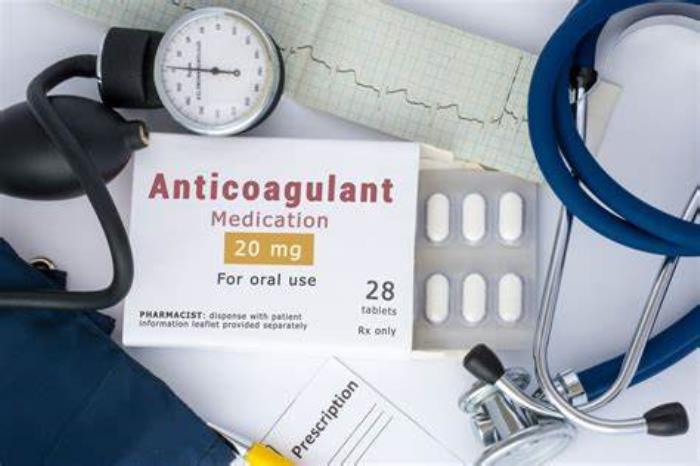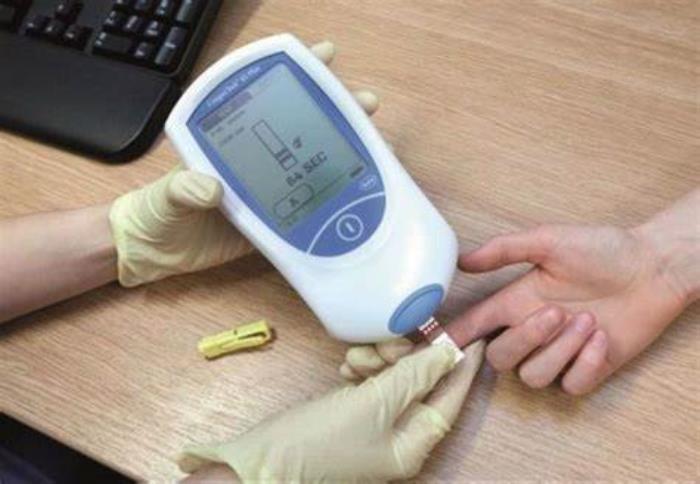Anticoagulation therapy plays a crucial role in managing patients who have undergone heart valve replacement surgery. After such procedures, the risk of blood clots significantly increases, which can lead to severe complications, including stroke and valve dysfunction. Anticoagulants are medications designed to prevent blood clot formation, ensuring a smoother recovery and enhancing the longevity of the replacement valve. Understanding the importance of anticoagulation therapy, its types, and how it works is essential for patients and healthcare providers alike.
What is Anticoagulation Therapy?
Anticoagulation therapy refers to the use of medications that inhibit the clotting process in the blood. These medications do not dissolve existing clots but prevent new ones from forming. By thinning the blood, anticoagulants help to maintain proper blood flow and reduce the risk of serious complications that can arise after surgeries, particularly in patients with prosthetic heart valves. The choice of anticoagulant and the management of therapy are tailored to each patient’s individual risk factors and medical history.
Why Anticoagulation is Necessary After Heart Valve Replacement
After heart valve replacement, patients are at a heightened risk of thromboembolism, where a blood clot can form on or near the newly implanted valve. This risk is particularly relevant for patients with mechanical valves, as these devices can disrupt normal blood flow and create conditions favorable for clot formation. Anticoagulation therapy is necessary to mitigate these risks, ensuring that blood clots do not compromise the function of the valve or lead to more severe complications such as stroke or heart attack.

Types of Anticoagulants: An Overview
There are several types of anticoagulants available, each with its mechanisms of action, benefits, and risks. The primary categories include traditional anticoagulants, such as warfarin, and newer agents known as direct oral anticoagulants (DOACs). Each type varies in how they are administered, monitored, and managed. Understanding the differences between these medications is critical for patients to effectively participate in their treatment plans and manage their health after heart valve surgery.
Warfarin: The Traditional Anticoagulant
Warfarin has been a cornerstone of anticoagulation therapy for many years, especially for patients with mechanical heart valves. It works by inhibiting the synthesis of vitamin K-dependent clotting factors in the liver, effectively reducing the blood's ability to clot. Patients on warfarin require regular monitoring of their International Normalized Ratio (INR) to ensure that their blood's clotting ability remains within a therapeutic range. Despite its efficacy, warfarin comes with dietary restrictions and potential interactions with other medications, necessitating careful management by healthcare providers.
Direct Oral Anticoagulants (DOACs): A Modern Approach
Direct oral anticoagulants (DOACs) represent a newer class of anticoagulants that offer several advantages over traditional medications like warfarin. These medications, which include apixaban, rivaroxaban, edoxaban, and dabigatran, work through specific mechanisms to inhibit clotting factors directly. One of the key benefits of DOACs is that they do not require regular monitoring of INR levels, making them more convenient for many patients. They also have fewer dietary restrictions and interactions, although patients must be aware of their renal function as this can affect dosing.
How Anticoagulants Work: Mechanisms of Action
Anticoagulants work through different mechanisms to prevent clot formation. Traditional agents like warfarin inhibit the synthesis of certain clotting factors dependent on vitamin K, thus reducing the overall ability of the blood to clot. In contrast, DOACs directly inhibit specific clotting factors such as thrombin or factor Xa, leading to a more rapid onset of action and predictable pharmacokinetics. Understanding these mechanisms is essential for healthcare providers to optimize anticoagulation therapy for their patients and to mitigate potential complications associated with heart valve replacement surgery.
Monitoring Anticoagulation Levels: INR Testing Explained
Monitoring anticoagulation levels is crucial for patients on blood-thinning medications to prevent complications such as blood clots or excessive bleeding. The International Normalized Ratio (INR) is a blood test that measures the time it takes for blood to clot, ensuring that anticoagulation therapy is effective and safe. Regular INR testing allows healthcare providers to adjust medication dosages as needed, maintaining optimal anticoagulation levels for each patient.

Risks and Complications of Anticoagulation Therapy
While anticoagulation therapy is essential for preventing thromboembolic events, it also comes with potential risks. Major complications include excessive bleeding, which can lead to hospitalization or even death. Patients may experience minor bleeding issues such as bruising, nosebleeds, or gastrointestinal bleeding. It’s important for patients to be aware of these risks and to monitor for any signs of unusual bleeding or other adverse effects during treatment.
Managing Bleeding Risks: What Patients Should Know
Patients on anticoagulants must understand how to manage their bleeding risks effectively. This includes recognizing the signs of bleeding—such as blood in urine or stool, prolonged bleeding from cuts, and unexplained bruising. To minimize risks, patients should communicate openly with their healthcare providers about any medical conditions or procedures they undergo and follow guidelines for safe activities. Wearing a medical alert bracelet can also be beneficial in emergencies.
Dietary Considerations: Foods That Affect Anticoagulation
Certain foods can significantly impact the effectiveness of anticoagulation therapy, particularly those high in vitamin K, such as green leafy vegetables. Patients are advised to maintain a consistent intake of these foods to avoid fluctuations in INR levels. Other foods and supplements, such as garlic and ginger, can also affect blood thinning. It’s important for patients to consult their healthcare providers or a dietitian for personalized dietary advice that aligns with their anticoagulation treatment plan.
Drug Interactions: Medications to Avoid
Anticoagulants can interact with various medications, potentially leading to increased bleeding risks or reduced effectiveness. Patients should provide their healthcare providers with a complete list of all medications, including over-the-counter drugs, supplements, and herbal remedies. Some common medications to avoid while on anticoagulants include nonsteroidal anti-inflammatory drugs (NSAIDs), certain antibiotics, and specific antidepressants. Regular medication reviews can help prevent dangerous interactions.
Patient Education: Understanding Your Treatment Plan
Education is key for patients undergoing anticoagulation therapy. Understanding the purpose of the treatment, potential side effects, and the importance of adherence to prescribed regimens can empower patients to take an active role in their health. Healthcare providers should ensure that patients are well-informed about how to manage their therapy effectively, including how to monitor INR levels and when to seek medical help.
Lifestyle Adjustments While on Anticoagulants
Patients on anticoagulation therapy may need to make lifestyle adjustments to enhance their safety and health. This includes avoiding high-contact sports that increase the risk of injury, practicing fall prevention measures at home, and incorporating safety practices while cooking or engaging in other activities. Maintaining a healthy lifestyle with regular exercise, a balanced diet, and good hydration can also support overall heart health.
The Role of Regular Follow-Up Appointments
Regular follow-up appointments are essential for patients on anticoagulants to monitor their health status and manage their treatment effectively. These appointments allow healthcare providers to check INR levels, evaluate any side effects, and make necessary adjustments to medication dosages. Consistent monitoring helps to minimize risks and ensures that patients remain within the target therapeutic range.
Transitioning Off Anticoagulants: When Is It Safe?
The decision to transition off anticoagulants should be made collaboratively between the patient and healthcare provider, based on individual risk factors and treatment goals. Factors such as the reason for anticoagulation, the patient's overall health, and the presence of any new conditions are considered. Patients should not stop taking anticoagulants without medical advice, as abrupt discontinuation can increase the risk of thromboembolic events.
The Impact of Anticoagulation on Quality of Life
While anticoagulation therapy is critical for preventing serious health issues, it can also impact a patient’s quality of life. Patients may experience lifestyle restrictions and psychological stress related to managing their treatment. However, with proper education, support, and lifestyle adaptations, many patients can maintain a high quality of life while effectively managing their anticoagulation therapy.
Addressing Common Myths About Anticoagulation Therapy
There are many misconceptions surrounding anticoagulation therapy that can lead to confusion and noncompliance. Common myths include the belief that anticoagulants are not necessary if the patient feels fine, or that all anticoagulants are the same. It’s vital for healthcare providers to address these myths through education, ensuring that patients understand the importance of their treatment and the nuances between different anticoagulant medications.
Patient Stories: Experiences with Anticoagulation Therapy
Hearing from other patients who have navigated anticoagulation therapy can provide valuable insights and encouragement. Many individuals share stories of successfully managing their treatment and achieving positive health outcomes despite initial fears or challenges. These testimonials can serve as motivation for new patients to engage actively in their treatment and adhere to their anticoagulation plans.
Innovations in Heart Valve Surgery: Minimally Invasive Techniques
Stay informed about the innovations in heart valve surgery, particularly minimally invasive techniques. This section explores how these advancements reduce recovery time, minimize scarring, and improve patient outcomes, revolutionizing the way heart valve surgeries are performed.
Risks and Complications Associated with Heart Valve Surgery
Understand the potential risks and complications of heart valve surgery. This section outlines common risks, how to recognize them, and the measures healthcare providers take to mitigate these risks, ensuring patients are well-informed before undergoing surgery.
Conclusion: Optimizing Heart Health Through Proper Anticoagulation
Effective anticoagulation therapy is vital for patients with certain heart conditions, particularly those who have undergone heart valve replacement or are at risk of thromboembolic events. By understanding the importance of monitoring, managing risks, and adhering to treatment plans, patients can optimize their heart health and significantly reduce the risk of complications. Ongoing education and support from healthcare providers play an essential role in ensuring successful anticoagulation therapy.
Best Heart Valve Replacement Surgeons in India
The Best Heart Valve Replacement Surgeons in India are highly skilled in complex valve procedures, offering personalized care to help patients achieve successful outcomes and enhanced heart health.
FAQ:
Why do I need anticoagulation therapy after heart valve replacement?
Anticoagulation therapy is necessary after heart valve replacement to prevent blood clots from forming on the new valve, which can lead to serious complications such as stroke.
What are the different types of anticoagulants available?
Common anticoagulants include warfarin (Coumadin), direct oral anticoagulants (DOACs) such as apixaban (Eliquis) and rivaroxaban (Xarelto), and low molecular weight heparins.
How often will I need to monitor my INR levels?
The frequency of INR monitoring varies by individual and medication but is typically every 4 to 6 weeks once stable. Patients may need more frequent testing during initial treatment or after any dosage adjustments.
What dietary changes should I consider while on anticoagulants?
Patients should maintain a consistent intake of vitamin K-rich foods and consult with a healthcare provider or dietitian for tailored dietary advice that supports anticoagulation therapy.
How can I manage the risks associated with anticoagulation therapy?
Managing risks involves regular monitoring of INR levels, avoiding certain medications and foods that may interact, practicing safety measures to prevent bleeding, and maintaining open communication with healthcare providers.